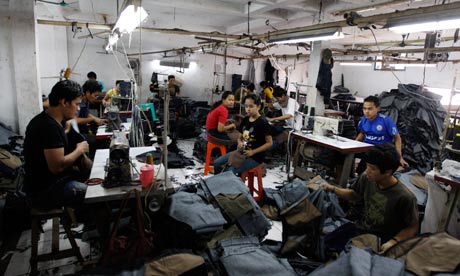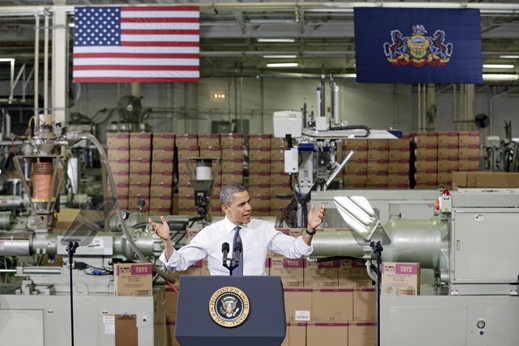A little over a decade ago, if one asked Americans about the state of their manufacturing sector, a tear would have been shed for what seemed to be the inevitable extinction of American manufacturing against the onslaught of cheap Chinese products flooding the global market. However it seems the merciless economic tides that once shipped manufacturing jobs overseas may be shifting in the United States’ favour.
Ironically, the change in fortunes for the American manufacturing sector has a lot to do with the success of developing economies, which, until recently, were major destinations for American companies wishing to move operations offshore to cheaper locales. As international trade theory stipulates, the wage rate in two countries trading with each other will naturally equalize as the nation with the lower labour cost would not only experience rising wage rates as a result of attracting greater demand, but would impose downward pressure on the wage rate of its trading partner, who is forced to better compete for labour-based production.

This has been the case for trading relationships between the United States and formerly low cost countries like China where annual increases in wages and benefits are eroding their labour cost advantage. In fact, a 2011 report by the Boston Consulting Group has found that due to the 15% to 20% annual growth rate in Chinese wages and benefits, the labour cost advantage between China and some low-cost American states would drop from 55% in 2011 to approximately 39% in 2015.
“Ironically, the change in fortunes for the American manufacturing sector has a lot to do with the success of developing economies,…”
However, the growing equalization of labour costs alone would only make manufacturers indifferent to the question of offshoring operations to developing countries. What also makes the United States more appealing to manufacturers is that the so-called ‘American energy renaissance’ has led to greater energy supply and in turn lower energy costs. Thanks to new technologies like hydraulic fracturing and horizontal drilling, which are used to extract the vast supplies of oil and natural gas from shale formations, the United States is not only expected to be energy self-sufficient in the coming decades but, in the near future, American-based manufacturing operations could further expand their profit margins through lower energy costs.
Though wage equalization and the current energy boom are greatly beneficial to the health of a once beleaguered manufacturing sector, it is America’s superior technological acumen that would solidify and enhance the recent gains of this sector. Just like the information revolution of the 1980s, Americans are once again applying technological disruption to relatively traditional economic practices. This disruption is in the form of advanced manufacturing, which employs new technologies, like 3D Printing, robotics and the Internet, to create a more automated and less labour-intensive manufacturing process.

In essence, advanced manufacturing creates a ‘digital factory’ that considerably shortens the time gap between the design stage and production stage. Furthermore, its makes manufacturing a more technologically intensive affair and thus plays to the American strength in technological adaption.
Due to the application of cutting –edge technology, the manufacturing jobs that will return to the United States will be quite different to those that were there before they left. Rather than assembly line jobs that any high school graduate was capable of doing, advanced manufacturing requires university graduates from STEM (Science, Technology, Engineering, Mathematics) programs to design, program and operate the factories of the future. Yet it is common knowledge that the current composition of the US workforce is highly lacking of such graduates. Furthermore, math and science skills among American high school students are below compared to their peers around the world. Unless this changes the promise of American manufacturing leadership will be short-lived.
For Americans, technology has always been the answer to the numerous challenges that they faced as a nation. From the rifled guns that gave American rebels better accuracy than their British opponents during their War of Independence to the information revolution of the 1980s, which ensured American economic superiority over their Soviet counterparts, technology has been the major driver of American progress and prosperity. It is no wonder that, once again, Americans look to technology to save them from their current economic ills. However, the question is, “if Americans have the ability and willingness to translate such innovation into a meaningful economic benefit?” Anojan Nicholas




